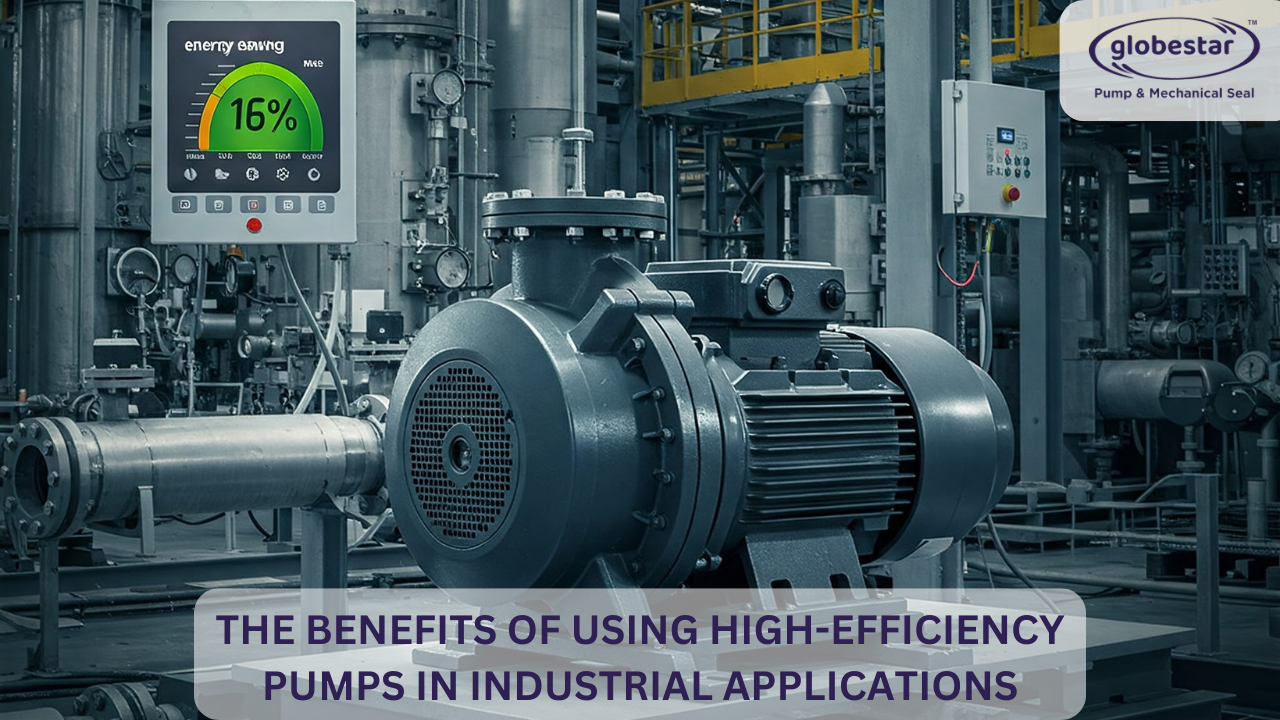- +91 - 9825062744
- G.I.D.C. Odhav, Ahmedabad - 382415 Gujarat, India.
- info@globeseal.com

In today's world, environmental sustainability and energy efficiency are critical concerns. Industries are under increasing pressure to reduce their carbon footprint and energy consumption. A significant portion of industrial energy usage is attributed to electric motors, with industrial pumps playing a pivotal role. This blog explores the remarkable advantages of high-efficiency pumps, with a special focus on the innovative solutions provided by Globe Star. These pumps are engineered to excel in diverse industrial applications, offering optimized hydraulic systems, integrated variable speed capabilities, and superior thermal insulation.
Globe Star's high-efficiency pumps are designed to surpass conventional pumps in numerous aspects. They incorporate an intelligent operational mechanism that ensures they activate when required and automatically adapt to pressure fluctuations within pipelines. This adaptive operation mode leads to substantial energy savings, with a significant portion of their operating time spent in the part load range. This demand-driven operation results in notable cost reductions.
To illustrate the efficiency gains, comparing Globe Star's high-efficiency pumps with less efficient alternatives is essential. While contemporary models typically consume around 50 to 100 kWh per year, traditional circulators in heating applications can exceed this, consuming approximately 500 to 800 kWh. Globe Star's high-efficiency, variable-speed circulators meet stringent energy efficiency standards, ensuring compliance and significant energy savings.
One of the most compelling benefits of upgrading to Globe Star's high-efficiency pumps is the rapid return on investment. Replacing a fixed-speed circulator with a more efficient Globe Star model typically pays for itself within three to four years. Moreover, these pumps provide immediate economic advantages and long-term savings due to their extended service life.
Globe Star's high-efficiency pumps are applicable across various sectors, including residential, commercial, and industrial settings. They are essential in cooling and general circulation systems, maintaining optimal working conditions. Whether used in heating, air-conditioning, ventilation, drinking water treatment, or renewable energy systems like solar thermal and geothermal, these pumps deliver efficient and reliable performance.
Energy efficiency and environmental responsibility in industrial operations cannot be overemphasized. The industrial sector's substantial energy consumption—accounting for 20-60% of total energy usage—significantly impacts the environment. Every effort to enhance pump efficiency, especially through solutions provided by Globe Star, represents a meaningful step towards reducing energy consumption and preserving natural resources. A single Globe Star high-efficiency pump can yield substantial energy savings, highlighting the significance of this technology in mitigating environmental concerns.
Several key variables can significantly impact a pump’s efficiency:
Now that we’ve identified the factors influencing pump energy efficiency, let’s delve into ways to enhance the performance of industrial pumps, emphasizing Globe Star's capabilities:
Employing Globe Star's energy-efficient pumps in manufacturing offers a host of advantages, including:
Here are some ways to optimize pump energy efficiency:
Using Globe Star's high-efficiency pumps in industrial applications offers numerous benefits, ranging from significant energy savings and reduced environmental impact to enhanced productivity and lower operational costs. By understanding the factors influencing pump energy efficiency and implementing the recommended measures, industries can take noteworthy steps toward a greener, more sustainable future.
For top-quality, energy-efficient pumps, choose Globe Star. We offer a wide range of high-efficiency pumps that lead to greater productivity and contribute to energy conservation and environmental preservation. It’s time to switch to Globe Star's energy-efficient pumps and reap the long-term rewards for your manufacturing applications. Contact Globe Star today to learn more about our energy-efficient pump solutions.